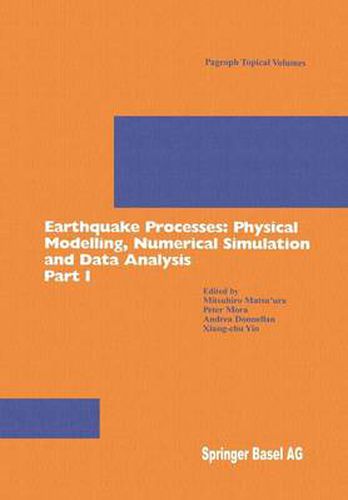Readings Newsletter
Become a Readings Member to make your shopping experience even easier.
Sign in or sign up for free!
You’re not far away from qualifying for FREE standard shipping within Australia
You’ve qualified for FREE standard shipping within Australia
The cart is loading…






This title is printed to order. This book may have been self-published. If so, we cannot guarantee the quality of the content. In the main most books will have gone through the editing process however some may not. We therefore suggest that you be aware of this before ordering this book. If in doubt check either the author or publisher’s details as we are unable to accept any returns unless they are faulty. Please contact us if you have any questions.
The last decade of the 20th century saw great progress in the physics of earthquake generation; that is, the introduction of laboratory-based fault constitutive laws as a basic equation governing earthquake rupture, quantitative description of tectonic loading driven by plate motion, and a microscopic approach to study fault zone processes. The fault constitutive law plays the role of an interface between microscopic processes in fault zones and macroscopic processes of a fault system, and the plate motion connects diverse crustal activities with mantle dynamics. An ambitious challenge is to develop realistic computer simulation models for the complete earthquake process on the basis of microphysics in fault zones and macro-dynamics in the crust-mantle system. Advances in high performance computer technology and numerical simulation methodology are bringing this vision within reach. This book is the first of two which present a cross-section of cutting-edge research in the field of computational earthquake physics. It includes works on microphysics of rupture and fault constitutive laws, and dynamic rupture, wave propagation and strong ground motion. The second volume covers earthquake cycles, crustal deformation, plate dynamics, and seismicity change and its physical interpretation. Topics covered in this volume range from the microscopic simulation and laboratory studies of rock fracture and the underlying mechanism for nucleation and catastrophic failure to the development of theoretical models of frictional behaviours of faults; as well as the simulation studies of dynamic rupture processes and seismic wave propagation in a 3-D heterogeneous medium, to the case studies of strong ground motions from the 1999 Chi-Chi earthquake and seismic hazard estimation for Cascadian subduction zone earthquakes.
$9.00 standard shipping within Australia
FREE standard shipping within Australia for orders over $100.00
Express & International shipping calculated at checkout
This title is printed to order. This book may have been self-published. If so, we cannot guarantee the quality of the content. In the main most books will have gone through the editing process however some may not. We therefore suggest that you be aware of this before ordering this book. If in doubt check either the author or publisher’s details as we are unable to accept any returns unless they are faulty. Please contact us if you have any questions.
The last decade of the 20th century saw great progress in the physics of earthquake generation; that is, the introduction of laboratory-based fault constitutive laws as a basic equation governing earthquake rupture, quantitative description of tectonic loading driven by plate motion, and a microscopic approach to study fault zone processes. The fault constitutive law plays the role of an interface between microscopic processes in fault zones and macroscopic processes of a fault system, and the plate motion connects diverse crustal activities with mantle dynamics. An ambitious challenge is to develop realistic computer simulation models for the complete earthquake process on the basis of microphysics in fault zones and macro-dynamics in the crust-mantle system. Advances in high performance computer technology and numerical simulation methodology are bringing this vision within reach. This book is the first of two which present a cross-section of cutting-edge research in the field of computational earthquake physics. It includes works on microphysics of rupture and fault constitutive laws, and dynamic rupture, wave propagation and strong ground motion. The second volume covers earthquake cycles, crustal deformation, plate dynamics, and seismicity change and its physical interpretation. Topics covered in this volume range from the microscopic simulation and laboratory studies of rock fracture and the underlying mechanism for nucleation and catastrophic failure to the development of theoretical models of frictional behaviours of faults; as well as the simulation studies of dynamic rupture processes and seismic wave propagation in a 3-D heterogeneous medium, to the case studies of strong ground motions from the 1999 Chi-Chi earthquake and seismic hazard estimation for Cascadian subduction zone earthquakes.